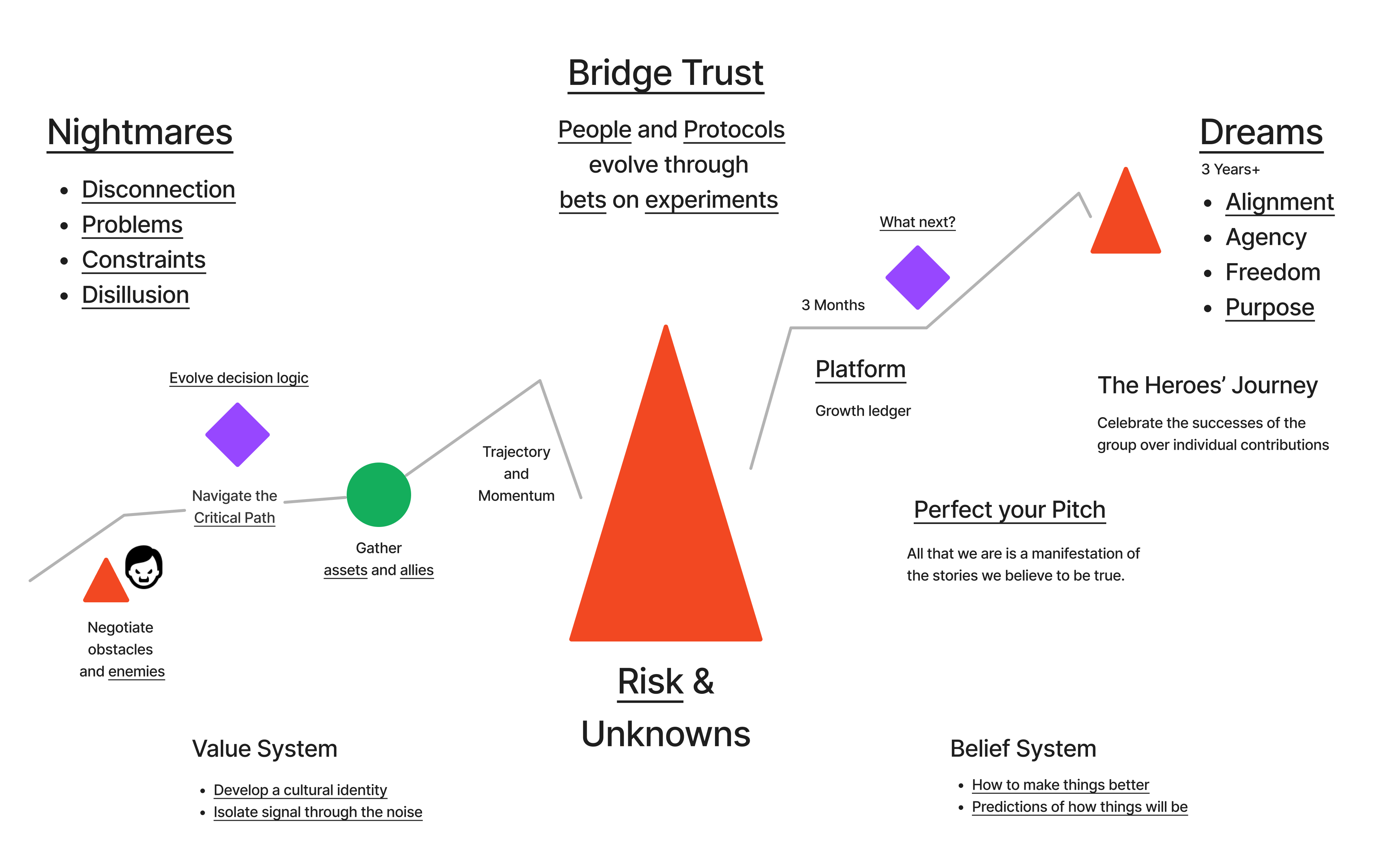Product
What annoys you? What needs to be done? How can you help others fall into a pit of success?
Your platform is your most valuable product
Subject Matter
Engineer systems that make it impossible not to follow the critical path to success.
- Jobs To Be Done
- Expectations vs Outcomes
- Market Research
- Delivery Playbook
- Product Distribution
- Developer Experience
Understand Purpose
Put yourself in the customer's shoes. Walk their journey with them, observing emotional triggers and quantifying estimates where value is lost.
- How to Fail at Almost Everything and Still Win Big
- Falling into the Pit of Success
- Don't Make Me Think
Prove Demand
Qualify Value
- Convert stories into worksheets linking back to the transcribed conversation.
- Proportion stories to ledgers as appropriate
- Link aggregated stories to a cashflow forecast for each ledger item.
- Allocate specific revenue streams to a dedicated ledger
- Proportion feature benefits to a revenue stream
- Proportion waste eliminating tasks to expense ledgers
- Proportion sustaining expenses
Quantify Expected Rewards Link JTBD improvement stories to potential progress in value ledger and belief system.
- Lost opportunity
- Lost time
- Cost of errors
Audience
- Addressing Pain or Performance
- Time horizon? Urgent or Future
- Who cares the most?
Price vs Value
Price is what people will pay, value is what you deliver.
- What is the DCF on a feature idea?
- Do you have the resources?
- Do you have the hunger?
Your Pricing Problem is a Positioning Problem
People
Help people/organisations to make meaningful progress.

What makes people tick?
What do all people need?
- Safe and Clean Environment
- Water and Nutritious Food
What makes life enjoyable?
- Play
- Freedom
- Happy Memories
What friction gets in the way?
Progress
Use reflective listening to capture stories that resonate with emotions.

- Focus on the agents/customer's context, required actions, and desired outcomes.
- Conduct story-based customer interviews
- Map the customer's full decision journey
- Understand the three key motivations driving customer progress
- Recognize that every decision has a cause, not a random walk
- Shift from a selling mindset to a helping mindset
Design and Mind
Use human centred design to reduce cognitive load in making progress.
Seven, Plus or Minus Two. Don't overload the brain with too much information when making presentations.
Simplify Choices
Decision Architecture is a field of study and practice that focuses on the design of choices and decision-making processes. It involves the systematic organisation and structure of information, options, and feedback to influence and guide people's decisions towards desired outcomes.
Choice architecture manipulates the context in which people make decisions. Our choices are influenced by factors we are not consciously aware of: different people can arrive at different decisions based on minor differences in how options are framed, what the default option is, and how their surrounding environment primes their mindset.
Engineer systems that provide the freedom to focus of high value decisions
Expected Reward
Use Outcome Driven Design to create a clear definition of what success looks like, then work backwards to dream up the path to get there.
Customer Success:
- What does success for the customer look like?
- How can you measure success?
- How will you know if you are off course?
Business/Product Success:
- Positioning
- Pricing
- Constant and honest revision of cost and effort estimates is important to avoid over-investing in unviable ideas.
- Dynamic cost assessment helps in making rational decisions throughout the development process.